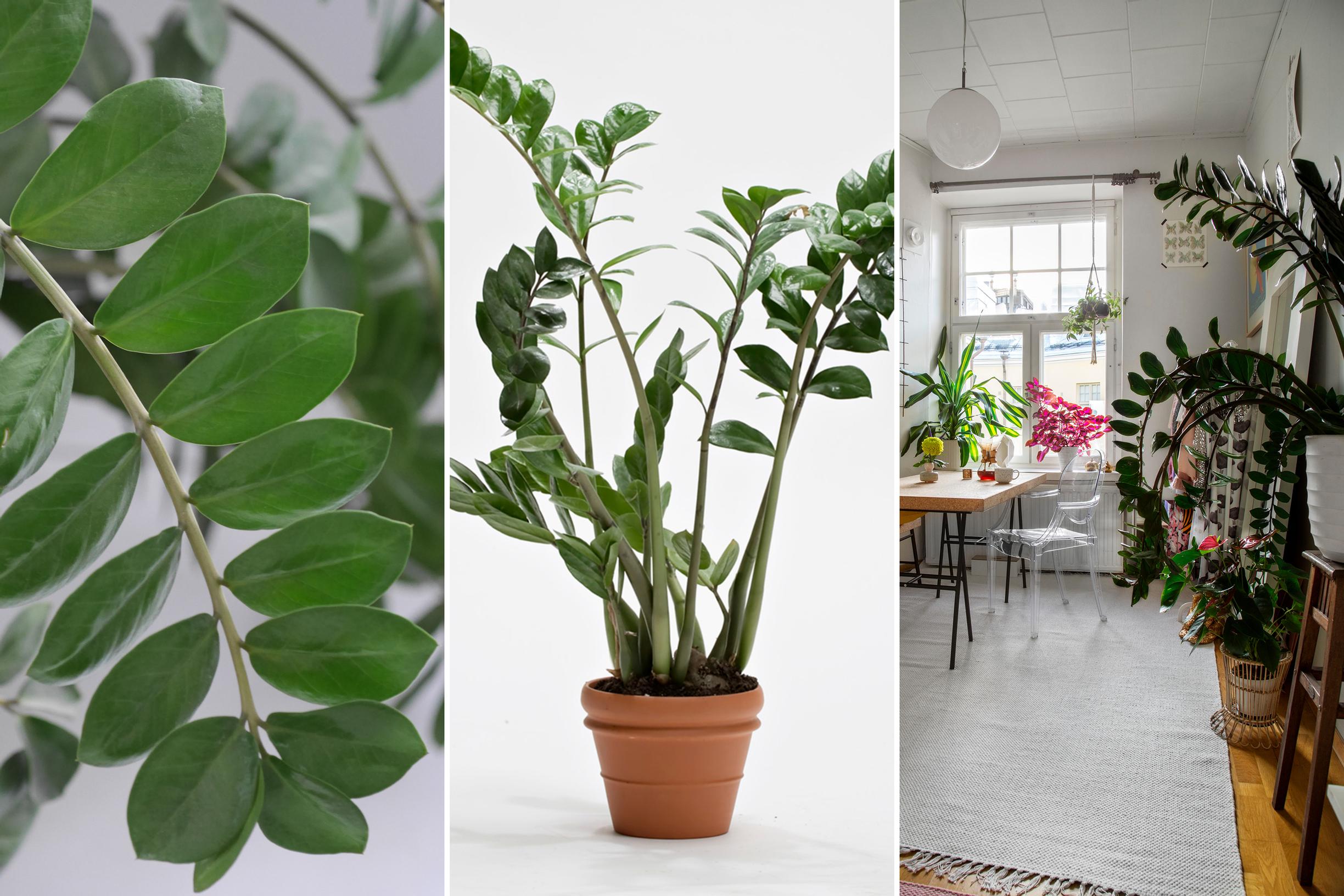
Zanzibar gem thrives even in dim corners—here’s how to care for it and propagate from rhizomes or cuttings
Zanzibar gem is among the hardiest, easiest houseplants to care for. This sculptural beauty thrives in a wide range of light conditions.
Originally hailing from Tanzania, zanzibar gem (Zamioculcas zamiifolia) is among the easiest houseplants to nurture. It thrives in bright light but tolerates direct sun and can even survive for months in near-complete darkness.
Zanzibar gem is probably the houseplant that can tolerate darkness the longest.
If your zanzibar gem is in a sunny spot, water it regularly from spring through fall. Let the soil dry thoroughly before watering again. In a shaded location, less frequent watering suffices compared to bright light.
During winter, water your zanzibar gem sparingly. Its tuber-like rhizome allows it to withstand long periods without water.
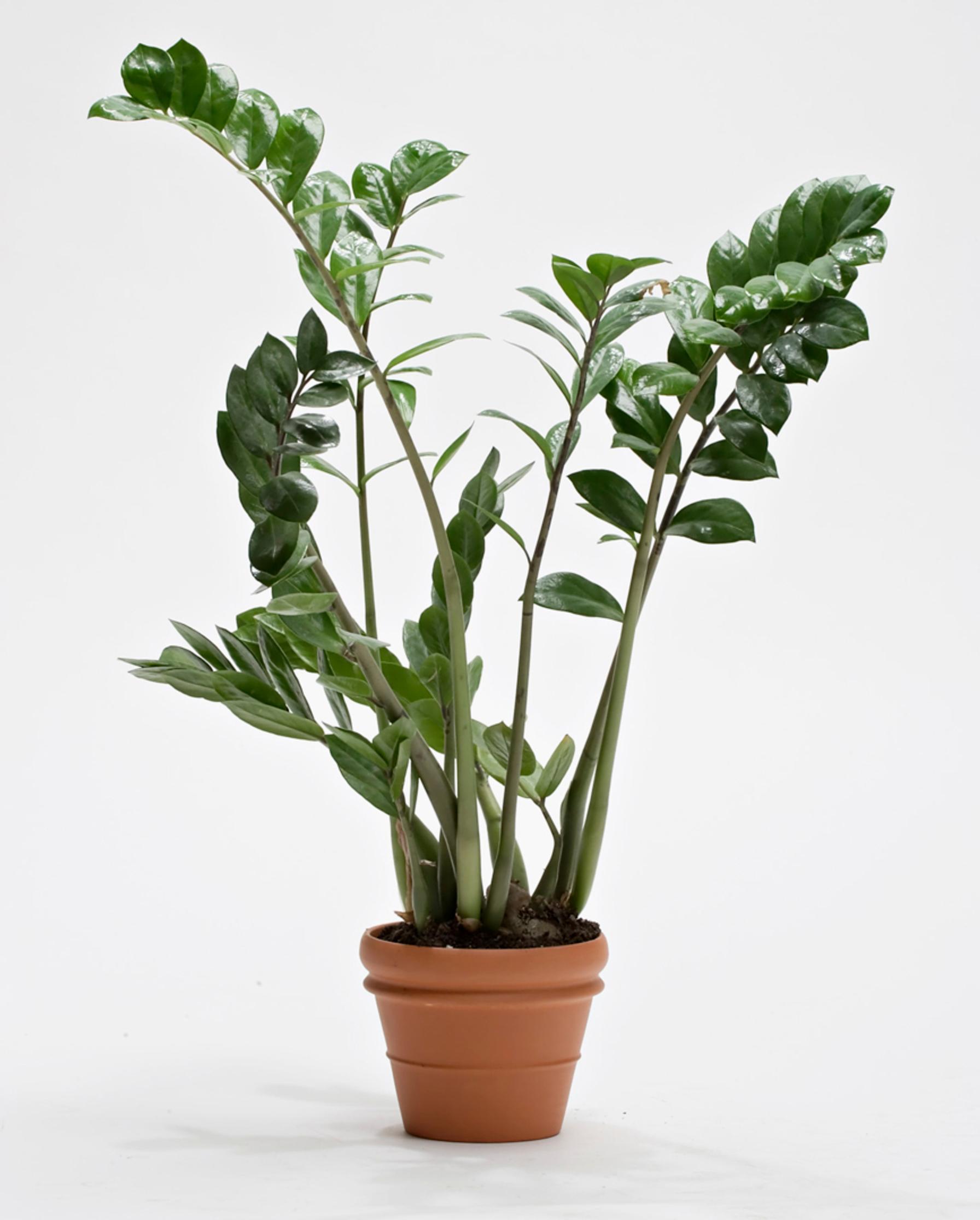
Zanzibar gems that grow over half a meter (about 20 in) tall in bright conditions typically bloom in spring and summer. Their low-profile inflorescence is modest but can last for several months.
Dark spots sometimes appear near the base of the leaf stalks, but they’re characteristic of the plant and not a cause for concern. You can cut away the inflorescences and any leaves that have shed their leaflets down to the base at any time.
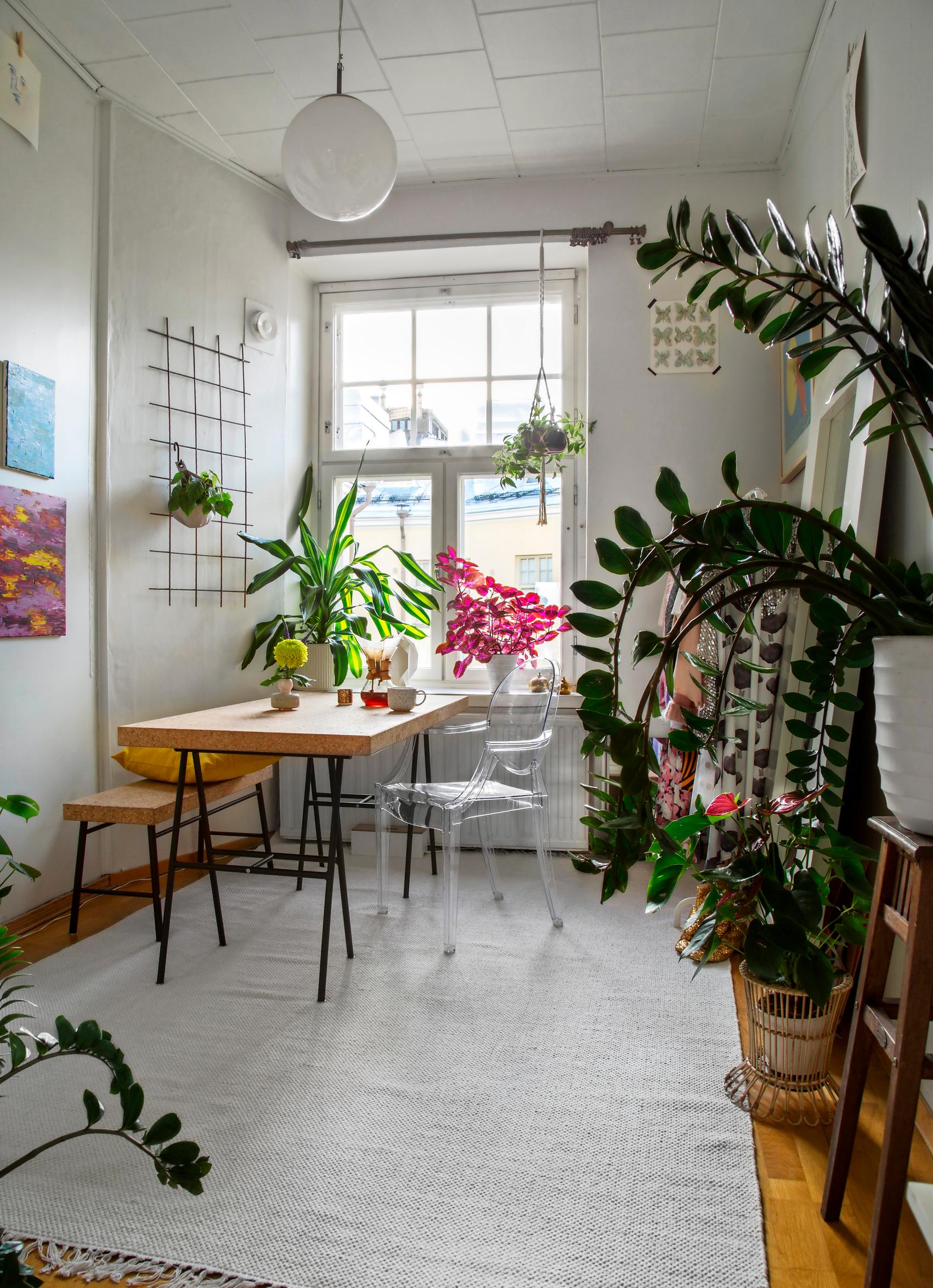
Dividing a zanzibar gem
Divide a zanzibar gem by cutting its rhizome into sections. Carefully remove the plant from its pot and use a sharp knife to split the tuber-like rhizome in two. Dust the cut surfaces with charcoal dust to block pathogens. You can get charcoal dust by crushing untreated grill charcoal or from a charred log. Let the divided plant rest for a few days so the cut surfaces can dry, then pot each section in its own container.
Wash your hands after dividing or taking cuttings. Zanzibar gem is toxic but usually only causes local irritation.
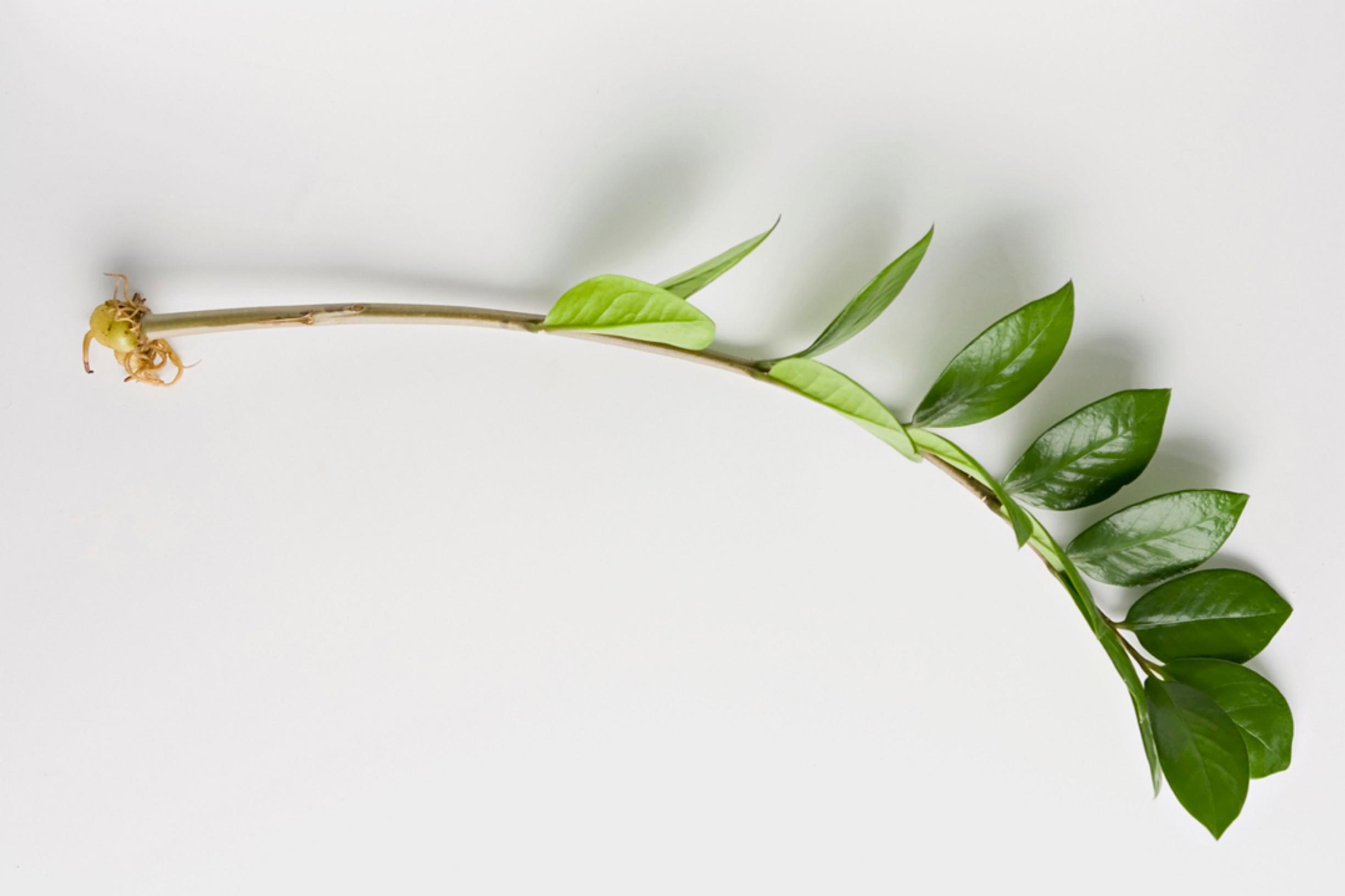
Zanzibar gem cutting
If you’d like to propagate or downsize an overgrown zanzibar gem, it’s also easy to do so with cuttings.
Its leaves are often called branches, though they’re segmented much like rowan leaves. Cut a complete leaf from the base and place it in a tall vase of water to root. Once roots form at the base, you can plant it in a pot.
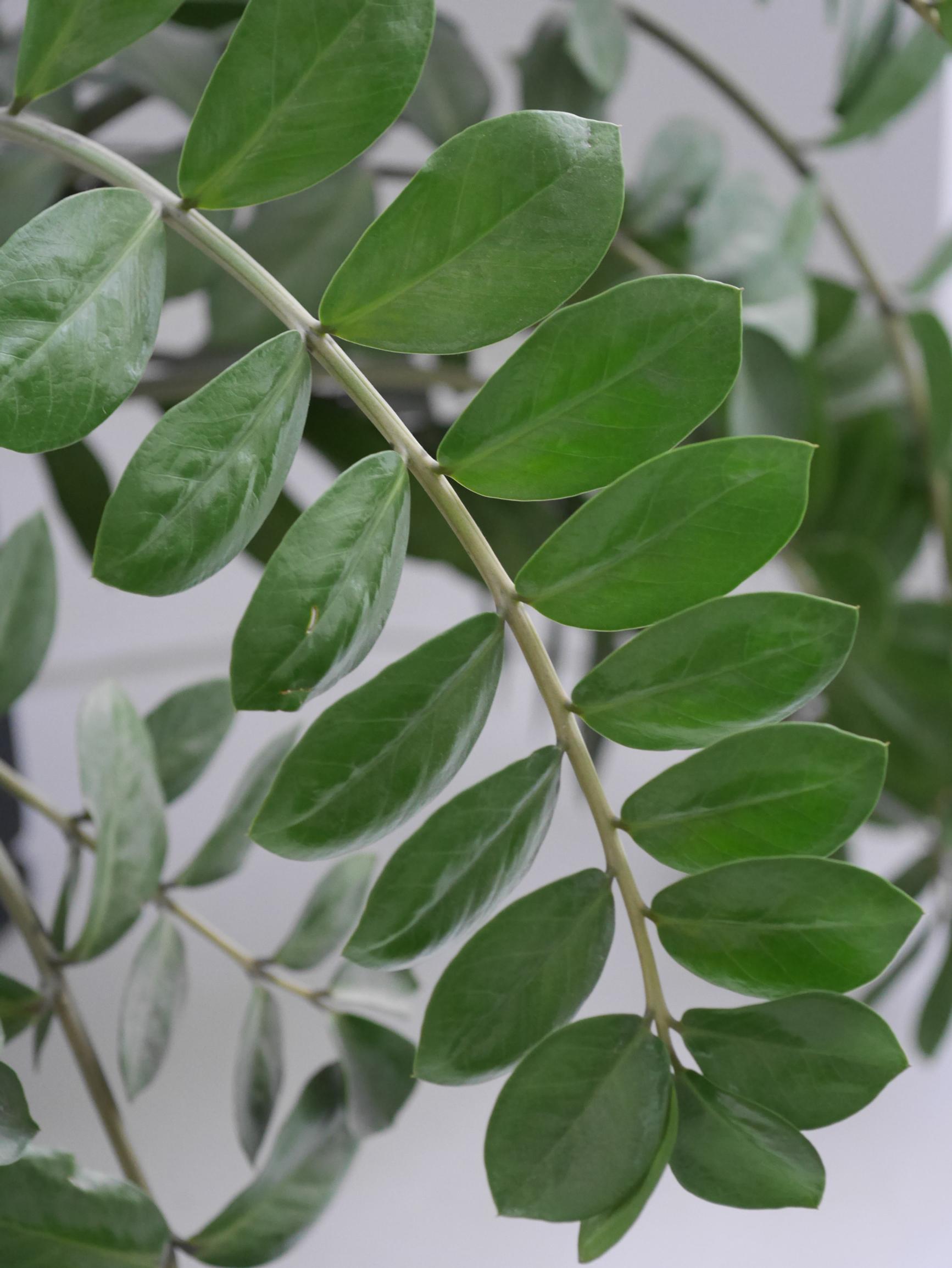
Wash your hands after dividing or taking cuttings. Zanzibar gem is toxic, but usually only causes local irritation.



